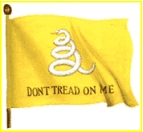ORIGINAL: golden delicious
ORIGINAL: vahauser
Well, in post #33 you suggested doing away with motor transport altogether. That would mean even more transport (than the 240 wagons + 30 trucks) if I went with all wagons in order to achieve a movement rating of 13 (and 13 is the correct movement rating for this scale as you correctly pointed out).
I was assuming 13 was the default infantry rate, which would mean no transport is required. This is the default for a lot of the common scale combinations but not, it seems, for this one. So go either with 11 move or stick with the transport you've outlined.
Even if the 269th is not the most veteran infantry division in the Wehrmacht, I still think it deserves an 80% proficiency. Even if I dropped the 269th to 75% proficiency (which is what I rate the 1st SS, 2nd SS, and 5th SS divisions [while the 3rd SS and 4th SS rate a 70%]), that still wouldn't drop the number of assault squads. I'm guessing that at 70% i'd assign 24, 65% 12, and 60% or lower would get none (this is purely speculative at this point).
I'm not sure I understand what you're basing the number of assault squads on.
Anyway, 1. and 2. SS Divisions were based around formations which had fought in three campaigns, so I would tend to think these units would be rated as high as reserve infantry formations which had not fought at all, with their experience compensating quite easily for the comparatively poor doctrine and organisation.
Sorry, you were correct the first time. No backpedaling allowed now. The correct movement rate for 25km hexes and 1-week turns is 13 for good infantry (which the 'early wave' divisions definitely are). That's your story and I'm sticking to it.
Regarding the 269th vs. the SS. This could open a whole can of worms and take the thread off topic. I don't want to do that. However, the assignment of assault/antitank squads at the divisional scale is subjective. I admit that I took inspiration for the concept from (and I'm giving credit to) the Directive 21 scenario. In my opinion, this is the most subjective aspect of everything I've done in this thread regarding the 269th (and divisions in general). The concept is that every division has some infantry assault/antitank capability (do not overlook the antitank aspect of this--it is crucial). The correlation between proficiency rating and assault/antitank capability is my basic rule of thumb. I haven't produced an algorithm for this because I intended this thread to be about building a single divisional TOE to provide prospective scenario designers with some food for thought. I could probably come up with a workable algorithm for a whole order of battle in a few days if needed. [As an aside, I might be inclined to give those fanatic SS divisions a higher number of assault squads even at a lower proficiency. Have to think about it some, but that's my initial thought.] Another facet of this is that it is a bonus. It is extra. Not every division gets it, and not every division gets the same amount. It is mostly above and beyond the base number of squads that normal accounting will derive. We are only talking a few hundred men (at most), and normal accounting will account for most of it. But what about the handful of squads that accounting does not account for? In many respects, this concept is the exact opposite of what Curtis Lemay did with his Soviet Union 1941 scenario. In that scenario, Curtis tried to account for all the rear-area specialists that normally never fired their rifles. Hundreds of extraneous (and, in my opinion, deliterious) squads were thus added to his divisions. This assault/antitank concept is the exact opposite--it is an estimate of those combat personnel (
not rear-area) who are operating at a level
above the base proficiency of the division. This is another reason why "counting rifles" is not the whole story in this case.
Niehorster says 36 105mm howitzers and 12 150mm howitzers for the early-wave divisions in 1941. The LoneSentry website version of the Handbook on German Military Forces says 36 105mm howitzers and 12 150mm howitzers for the early-wave divisions. I'm sticking with 36 105mm howitzers and 12 150mm howitzers (or guns, whatever) unless I see definitive and conclusive evidence to the contrary.
Regarding the 'reserve' status of the 269th. Compare the 269th with the way the US Army handled its Regular Army and National Guard divisions. Some of the US Army National Guard divisions performed extremely well (like the 88th). The situation with the German divisions is roughly analogous during 1939-42 (after which things get muddier). In general, Regular Army divisions performed slightly better on average, but after a brutal campaign where the replacements are of uneven quality, the distinction between Regular Army and Reserve became more and more blurred. Admittedly, in the summer of 1941 this hadn't happened yet, but I don't want to dismiss the 269th out of hand just because it was a 'reserve' division. Also, trying to track each and every divisional history in an attempt to glean some tidbit of minutiae regarding the division's combat performance is a waste of time. Once again, the generic solution is preferable.






